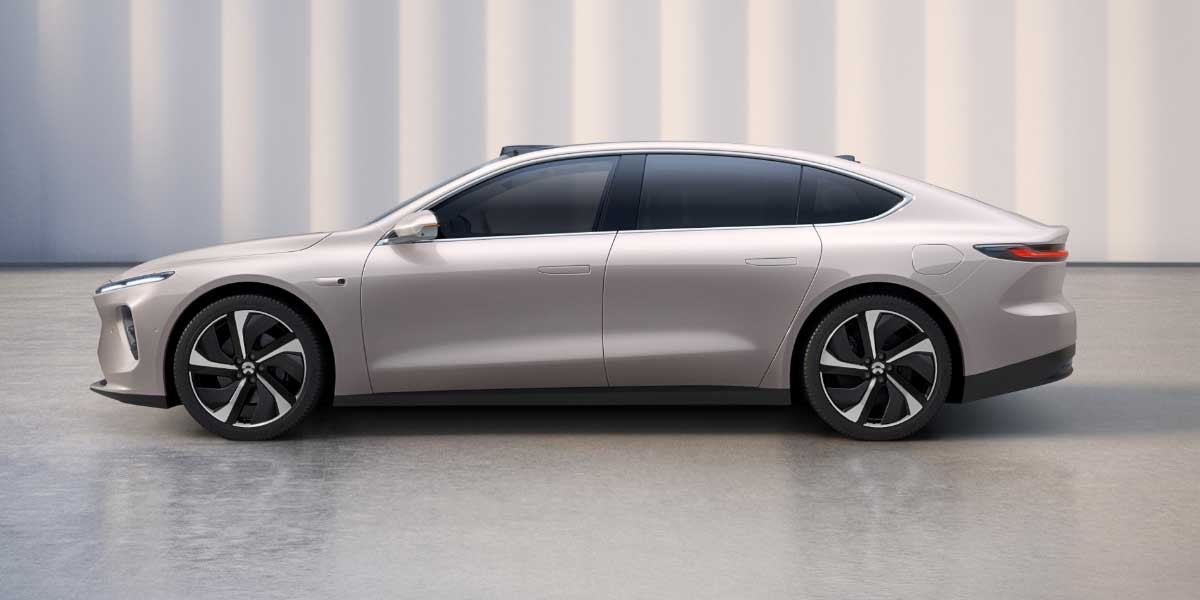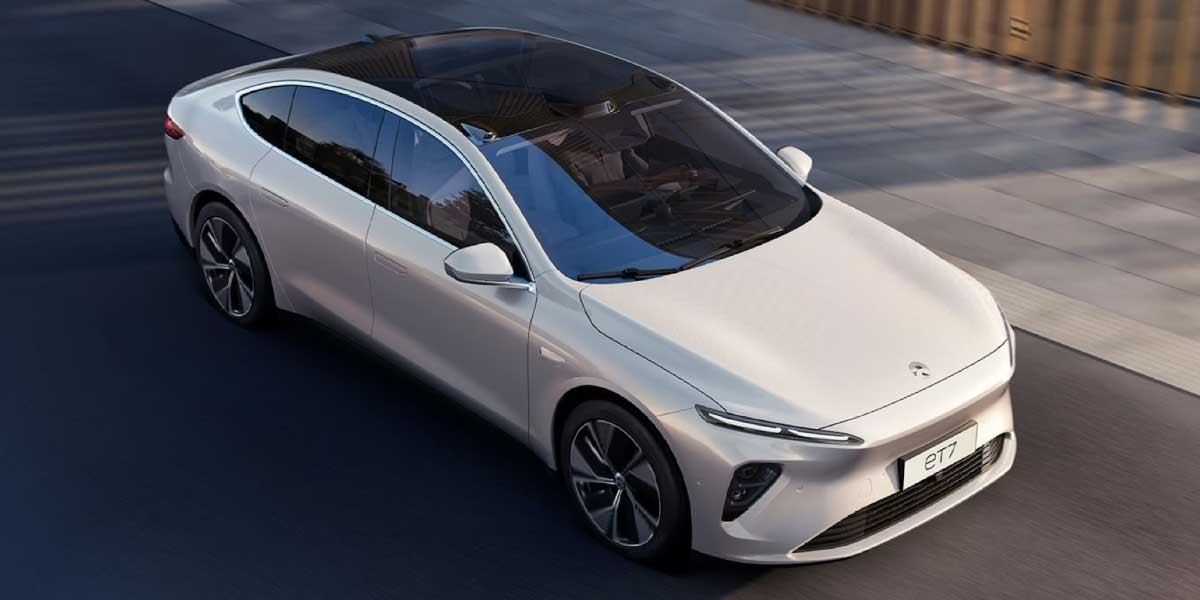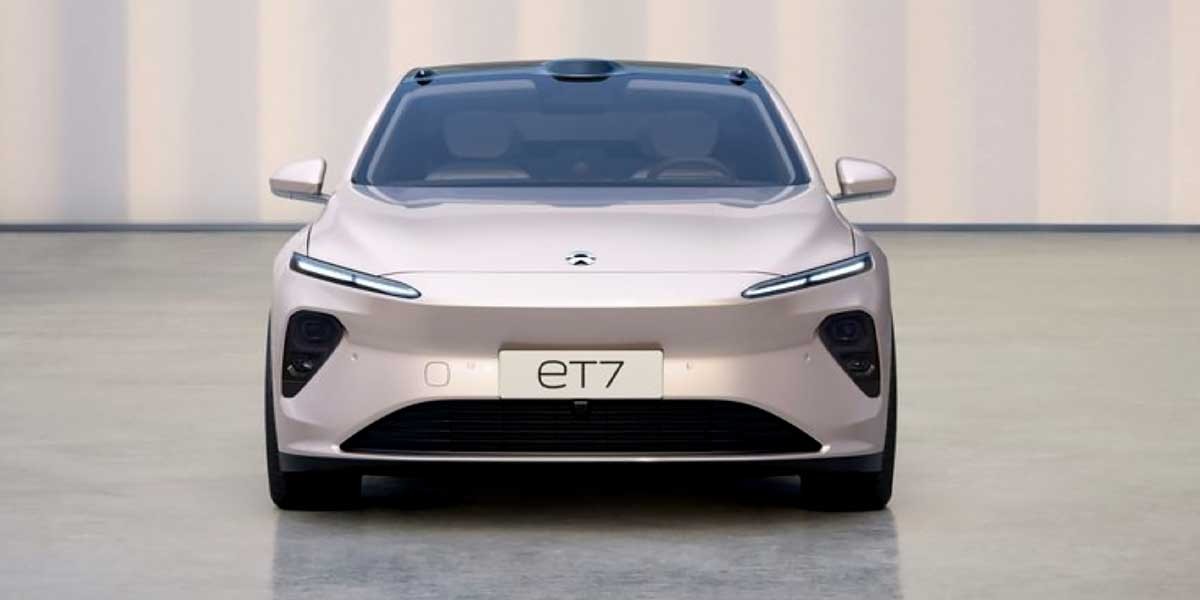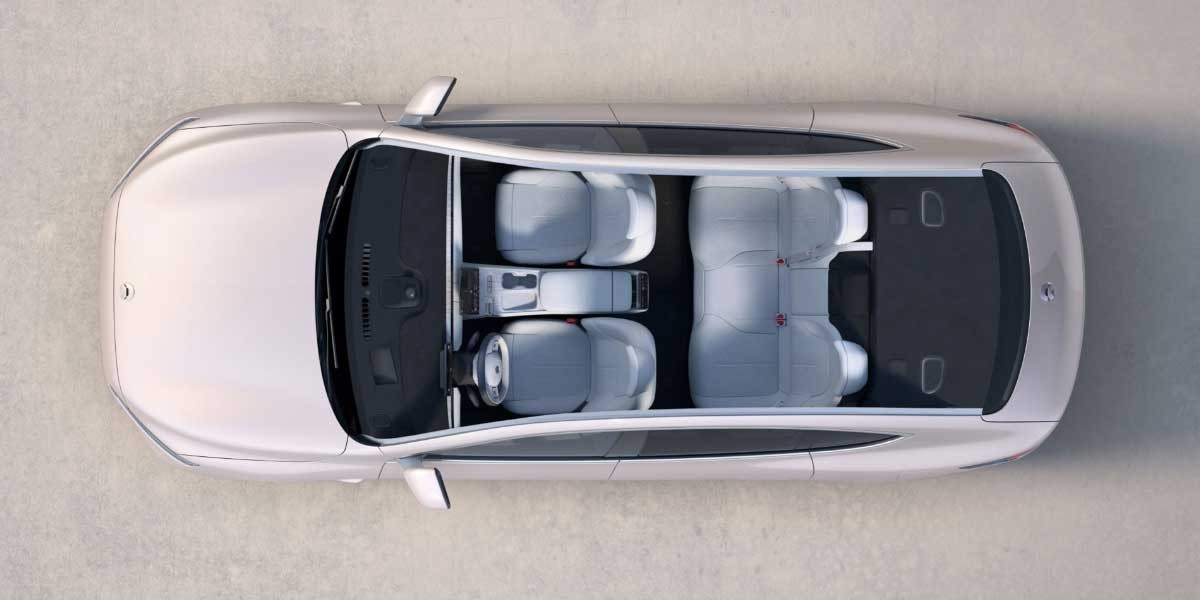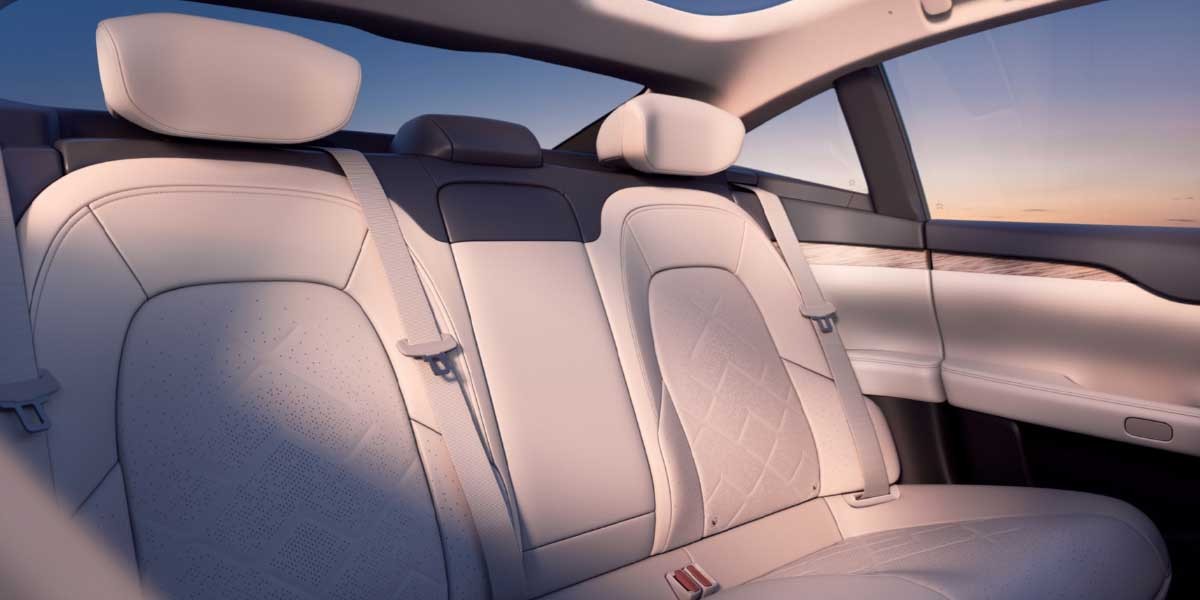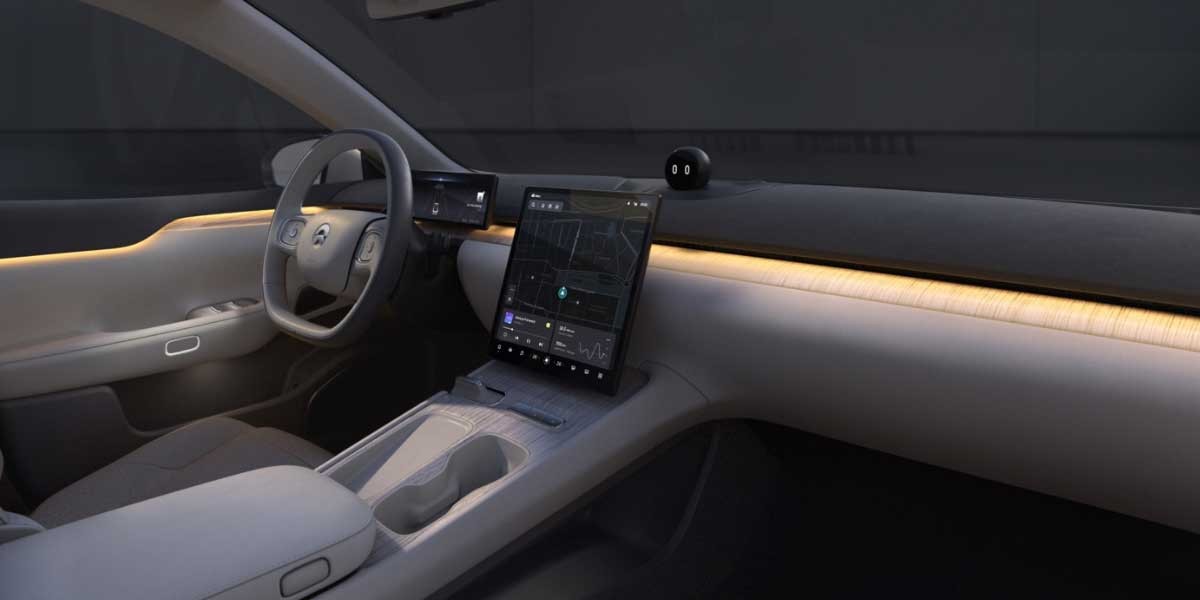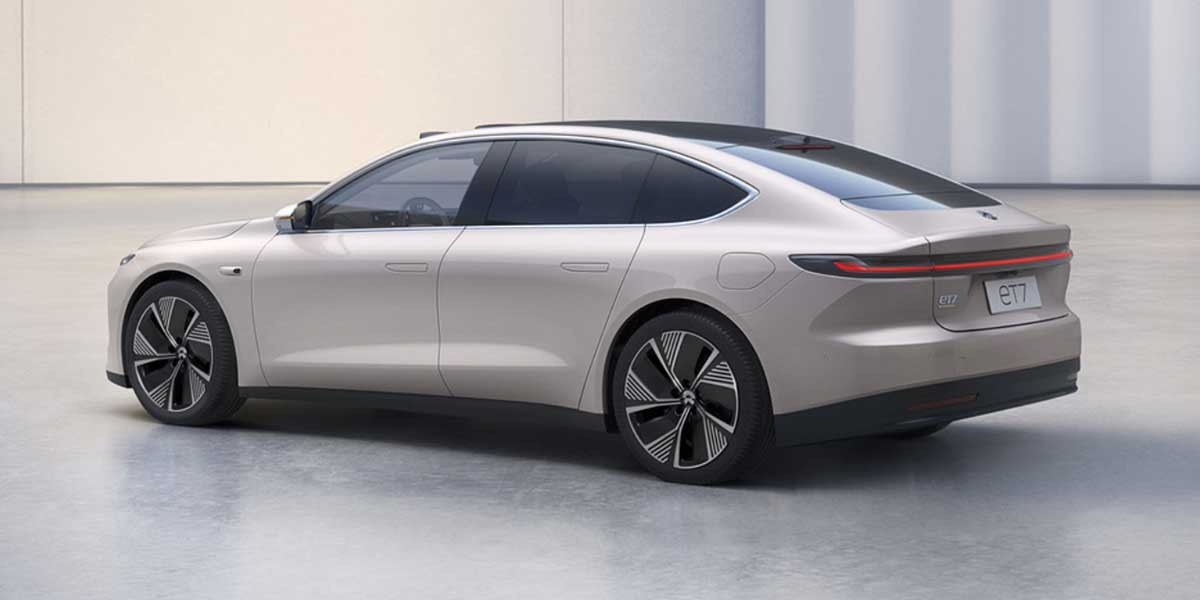NIO ET7
User Rating: 4.79 / 5





NIO ET7 stands out as an electric sedan that combines sleek design with impressive technology, offering drivers both performance and luxury. Its advanced battery promises long range, while the cabin's tech-focused features cater to modern demands.
Starting price: US$ 78000 *
Technical Specifications:
| manufactured in | China |
| model year | 2021 |
| electric range (km) | 675 |
| battery (kWh) | 100 |
| max. speed (km/h) | 200 |
| 0 to 100 km/h (sec) | 3.9 |
| power (h.p.) | 653 |
| car type | sedan |
| drive type | AWD |
* Minimum price set by the manufacturer, excluding taxes and additional options
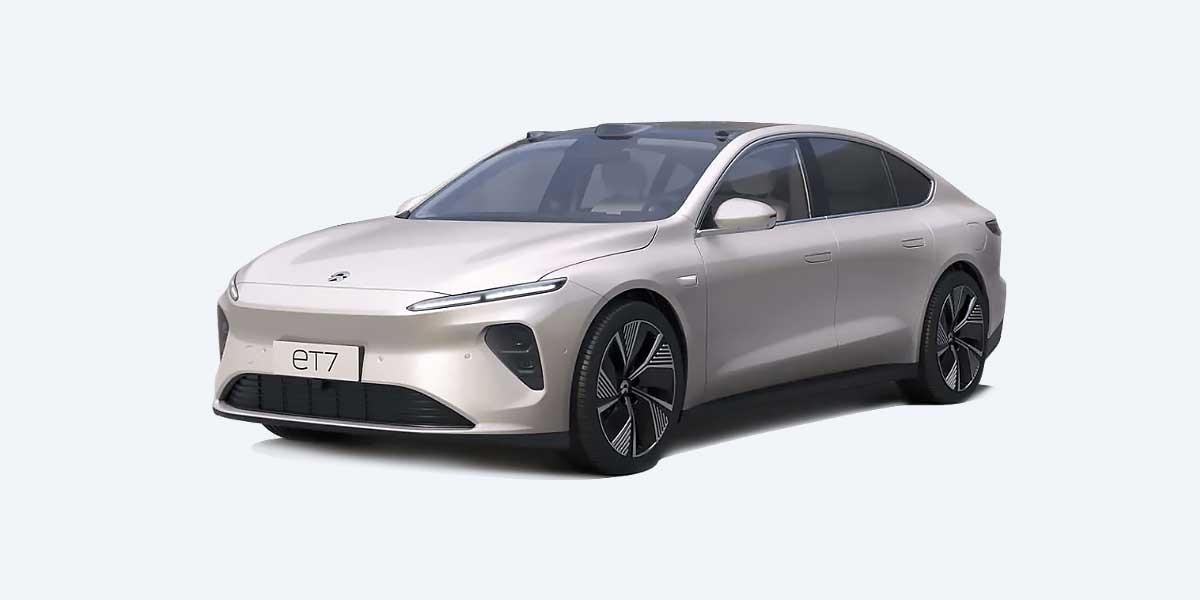
Exterior and Interior photos of NIO ET7
NIO ET7 Review
Unveiling the NIO ET7: A Beacon of Electric Luxury and Innovation
In the rapidly accelerating world of electric vehicles, each new model seeks to outdo its predecessors in both flair and function. Among these, NIO has unfurled its latest ace, the ET7, distinguished by being the first in its stable to wield the advanced Lidar technology. This move not only marks a giant leap in driving assistance but also in autonomous capabilities, setting the bar high for what’s to come.
The Prowess of the NIO ET7's Advanced Driving Assistance
NIO’s foray into the electric vehicle market has been nothing short of spectacular, with each model outshining the last. With the ET7, the brand has pushed the envelope even further. An exemplar of this remarkable evolution was witnessed in the pilot conduct of the ES6 model, where it demonstrated autonomous lane changing - a feat that left onlookers gobsmacked. The ET7, with its promise of augmented performance and enhanced safety features, though initially dormant, hints at a future where the car becomes an extension of the driver’s intent.
Exquisite Exterior Silhouette
The ET7 doesn't just stop at internal wizardry; its external visage is equally mesmerizing. Crafted to slice through air with the elegance of a prowling shark, it sports a drag coefficient of a mere 0.208. This aerodynamic marvel is achieved without forsaking the indispensable hardware that bolsters its advanced functionalities. The Lidar sensor, perched gracefully above the windshield and encircled by high-definition cameras in a configuration dubbed the “Watchtower”, marries elegance with efficiency in an unparalleled manner.
An Internally Luxe Journey
Stepping inside the ET7 transports you into a realm where minimalism dances gracefully with sophistication. The interiors, a significant leap from its predecessors, employs rattan, playing to the tune of sustainability while adding a dash of uniqueness. Whether it’s the option of vegan leather or the plushness of Nappa leather that swathes the cabin, the ET7 speaks the language of luxury fluently. Moreover, its array of inventive features, like a center console that acknowledges your face or a secret code for access, sets the ET7 apart in the electric vehicle symphony.
Elevating Passenger Comfort to New Heights
The ET7, attentive not just to the one behind the wheel but also to those in repose, ensures comfort isn’t parcelled but generously spread across its cabin. A panoramic roof invites the sky inside, creating a liberating sense of space. The rear seats, free from the encumbrance of a raised tunnel, offer a legroom that rivals even the most opulent of limousines, while a dedicated LCD panel empowers rear passengers with control over their micro-environment.
Exhilarating Performance and Aerodynamic Mastery
When unleashed on the tarmac, the ET7’s alchemy of speed and stability becomes apparent. Darting from naught to significant velocity in just 3.8 seconds in Sport+ mode, its performance is a clarion call to speed enthusiasts. The spectacle of the ET7 gaining altitude upon acceleration is testament to the potency of its dual electric motors. Coupled with an air suspension system that elegantly pirouettes between agility and stability, the ET7 ensures the thrill of driving is never compromised.
Navigating through driving modes, from the silken smoothness of Comfort to the frugality of Eco, the ET7 proves itself versatile. And with a promised range that leaps over mountains and valleys up to 615km on a 100kWh battery, it whispers of long journeys made shorter. The horizon is broadened further with the whisper of a forthcoming 150kWh semi-solid state battery, heralding a future where distances shrink in significance.
Indeed, the NIO ET7 stands not merely as a vehicle but as an experience, where technology and luxury converge in a symphony of elegance and efficiency. As it rolls out its repertoire of features, it prepares to redefine the roads we traverse, promising a voyage not just to destinations, but through the very future of automotive excellence.
Manufacturer: NIO
Watch the Video Overview
Comparison:
Range
When it comes to range, the NIO ET7 stands tall with an impressive 675 km (419 miles). The Tesla Model S offers up to 652 km (405 miles), falling slightly short. Meanwhile, the Lucid Air Pure boasts a similar yet formidable 653 km (406 miles). The BMW i4 M50 manages a respectable 520 km (323 miles), and the Mercedes EQE clocks in with around 590 km (367 miles). Clearly, the ET7 is your go-to long-hauler in this echelon.
Acceleration
In terms of acceleration, the NIO ET7 rockets from 0 to 100 km/h in a brisk 3.9 seconds. The Tesla Model S, however, leaves most competitors in the dust with a blistering 2.1 seconds. On the other hand, the Lucid Air Pure hits 100 km/h in 4.8 seconds, the BMW i4 M50 achieves 3.9 seconds, and the Mercedes EQE lags with a 0-100 km/h of around 5.6 seconds. Here, ET7 holds its own as a swift, though not the outright fastest, option.
Power
The NIO ET7 packs a mighty punch with 653 horsepower (487 kW). The Tesla Model S trumps all with a staggering 1020 hp (761 kW). The Lucid Air Pure is no slouch either, housing a potent 480 hp (358 kW). The BMW i4 M50 stands strong with 536 hp (400 kW), and the Mercedes EQE holds a modest power output of 288 hp (215 kW). Clearly, NIO ET7 flexes significant muscle, but Tesla’s Model S is the undisputed titan.
Charging Time
When it comes to charging, the NIO ET7 charges from 20% to 80% in just under 30 minutes using a 100 kW DC fast charger. The Tesla Model S offers about the same, taking around 25 minutes using the Supercharger network. The Lucid Air Pure claims approximately 20 minutes for a similar charge, whereas the BMW i4 M50 takes about 31 minutes. Lastly, the Mercedes EQE needs around 32 minutes. ET7’s fast-charging time is competitively swift, keeping inconvenience to a minimum.
Price
The NIO ET7 enters the fray at $78,000 (£65,000/€75,000). The Tesla Model S demands a premium, at $89,990 (£75,000/€86,000). The Lucid Air Pure offers a touch of exclusivity at $77,400 (£64,500/€74,000). The BMW i4 M50 is more affordable at $65,900 (£55,000/€62,000), and the Mercedes EQE enters the market at approximately $70,000 (£58,000/€68,000). NIO ET7 carves a niche by offering robust specs and luxury without the intimidating Tesla price tag.
F.A.Q.:
What is the range of an electric vehicle on a single charge?
The NIO ET7 has a range of 675 kilometers (419 miles) on a single charge.
How long does it take to fully charge an electric vehicle?
Charging times can vary, but the NIO ET7 typically takes about 8-9 hours to fully charge using a standard home charger.
What is the price of a car?
The NIO ET7 is priced at approximately $78,000, which is around €73,700 or £63,400 using current exchange rates.
What is battery capacity?
The NIO ET7 is equipped with a 100 kWh battery.
What is top speed?
The NIO ET7 has a top speed of 200 km/h (124 mph).
What is total power?
The NIO ET7 has a total power output of 653 horsepower (487 kW).
What is total torque?
The total torque for the NIO ET7 is 850 Nm (627 lb-ft).
Acceleration compared to other EVs?
The NIO ET7 accelerates from 0 to 100 km/h (0 to 62 mph) in 3.9 seconds, which places it among the faster electric vehicles on the market.
Can electric vehicles be charged at any charging station?
Yes, electric vehicles like the NIO ET7 can be charged at most public charging stations, provided they have the appropriate connector type.


